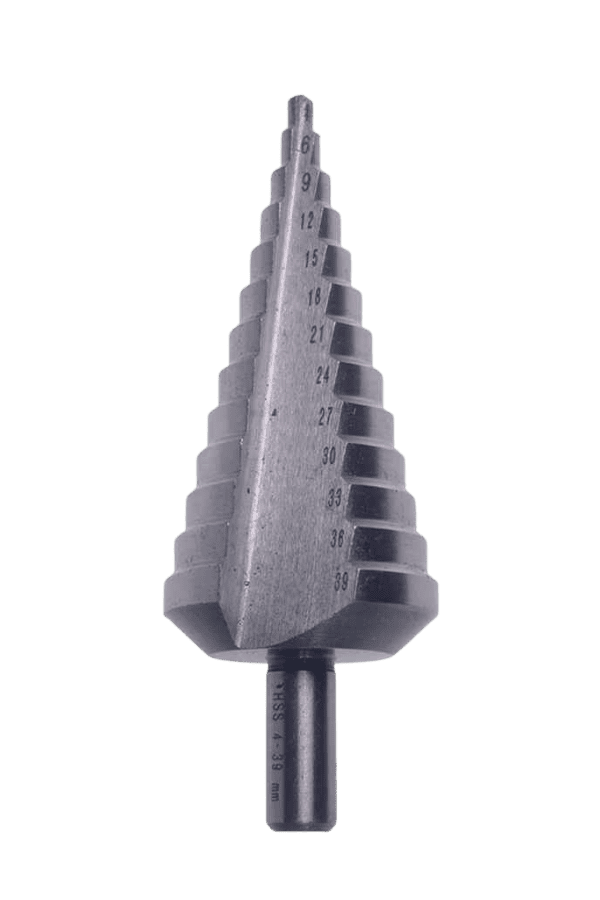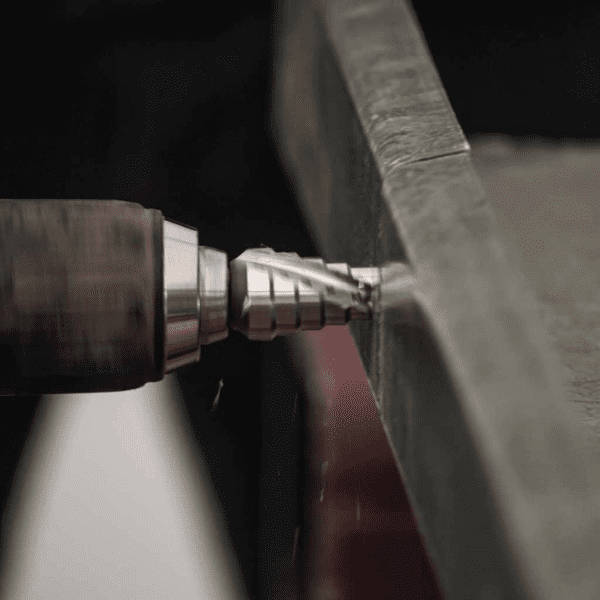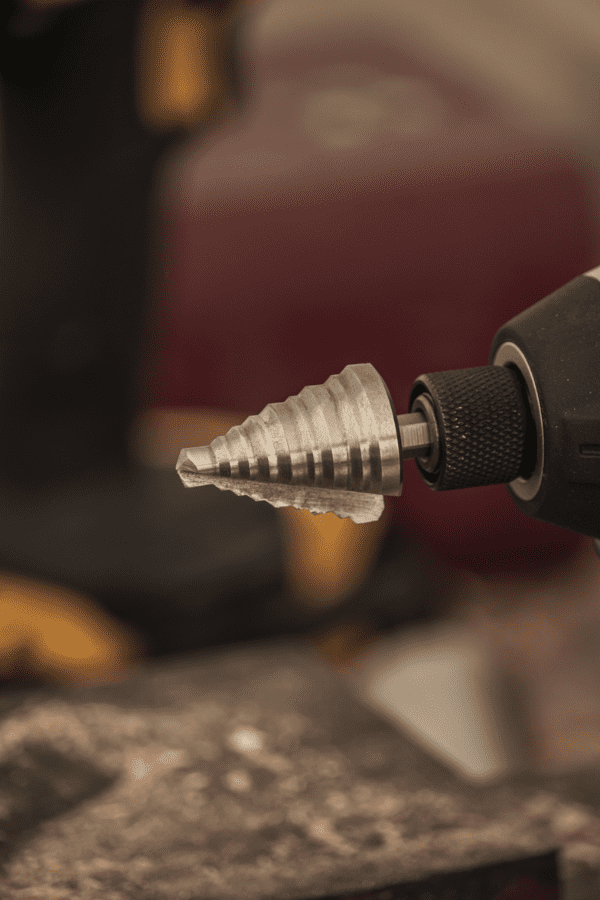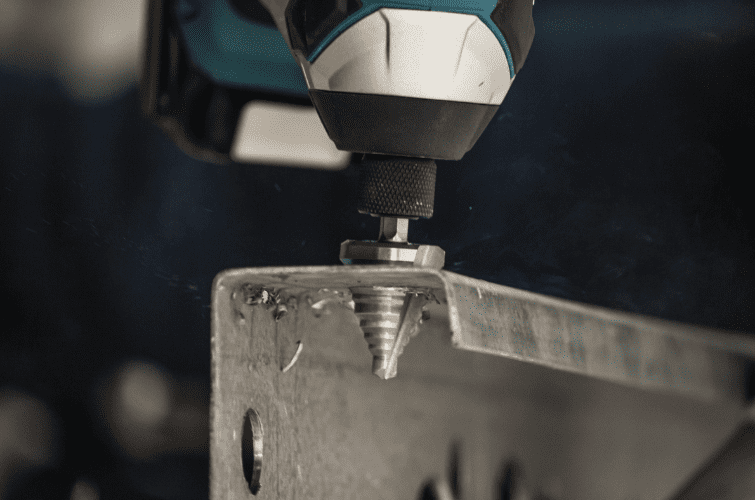Headlines
What is a step drill bit?
21 October 2022

What is a step drill bit?
A step drill bit allows you to drill different sized holes with a single bit. The bit is cone like shaped, so the further you drill into the material, the wider the hole will get.
It is a very small and handy accessory for any professional tradesmen, and can be used in many applications, especially when drilling through sheet metal. For example, an electrician may use these for drilling the correct size hole in a junction box and panel, or by an automotive technician when carrying out installations and repairs.
Tradesmen love step drill bits as they improve working efficiency as there is no need to change the drill bit to get the correct size hole.
What is a step drill bit used for?
Step drill bits are mainly used to cut holes in metal. They are also used to drill wood, acrylic, and other plastics, but one limiting factor of the step drill bit is that they are only suitable for cutting thin materials, such as sheet metal. The material has to be 5mm thick or thinner for the step drill to be able to drill through it.
The step drill bits can help to both drill holes, and also enlarge current holes. This is because of the shape of the drill bit, allowing it to efficiently enlarge holes to the correct size with the help of the step design.
Step drill bits are great for cutting through plastic, it offers a very smooth cut and finish without damaging the hole or material. They are also great at cutting through thin metal, as it cuts it very smoothly compared to twist drills, and slowly shaves off the metal leaving a smooth beveled edge to the metal.
How does a step drill bit work?
 Step drills are extremely easy to use; you simply put it into your drill, like every other drill bit. How deep you drill through the material depends on how wide you need the hole to be. The diameter of each step is marked on the side of the step drill, allowing you to easily create the correct size hole.
Step drills are extremely easy to use; you simply put it into your drill, like every other drill bit. How deep you drill through the material depends on how wide you need the hole to be. The diameter of each step is marked on the side of the step drill, allowing you to easily create the correct size hole.You may want to take regular breaks when drilling, especially in metal. This is to prevent overworking the drill or overheating the step drill bit. An overheated drill bit blunts quickly, resulting in a shorter life span of the accessory.
Why use a step drill bit?
There are many different advantages and reasons why you may want to use a step drill bit. The main reason is to provide a very smooth and clean finish on any hole in metal or plastic. They are also great at drilling precise holes so are very efficient and effective for specific cuts needed, which, for example, a plumber or electrician may need to do.
Step drill bit uses
 The main application for step drills is to drill through sheet metal. It is very simple and easy to use and will provide a very smooth clean cut.
The main application for step drills is to drill through sheet metal. It is very simple and easy to use and will provide a very smooth clean cut.- Step drills are also able to drill through wood, but it needs to be thin in order for the step drill to work.
- They can also drill through acrylic and plastics, and it provides a better finish compared to standard twist drills, as it prevents cracks from appearing in the plastic.
- Deburring and chamfering holes is also possible with step drills. To debur, you simply touch the material with the beveled edge of the next step on the bit. To chamfer, allow the wider step (next step up) to cut slightly deeper into the material.
- One type of tradesmen that benefits massively from step drills are electricians. These are must have accessories for electricians as they can drill a variety of different size hole in fittings, panels, and junction boxes etc.
- Stepping drill bits are also popular accessories in the automotive industry, allowing technicians easy ways to drill a variety of different sized holes without changing the accessory. It is especially used when working on body work and electrics such as sound systems in cars.
- These accessories are also used in HVAC (heating, ventilation, and air-conditioning) applications. This type of work requires a lot of holes to be drilled at different widths, so the step drill make work efficient, and it is a time saver.
Can you use a step drill bit on wood?
Step drills are mainly designed for drilling though thin metal and plastics, but they could also drill through wood. This isn’t the most popular option for drilling through wood as it won’t produce as clean or fast a cut compared to other drill bits, such as the HSS brad twist drill bits.
The HSS brad twist drills are very good options for drilling through wood, this is because they have a extremely sharp point which helps to produce very precise, tear free holes. They are suitable for cutting hard and soft wood, and also man-made board.
Even though the step drills aren’t specifically designed for drilling through wood, they will still be able to do it, but it will be quite a slow cut compared to the brad twist drills. The variable size options still make it very helpful for cutting through thin wood, so this is a popular choice.
DART's step drill bits
 The step drill bits at DART are precision engineered steel bits with straight flute tapered cutting edges. This allows for de-burning or chamfering of the hole drilled. They are HSS Ground with a split point for spot drilling, without pre-centering.
The step drill bits at DART are precision engineered steel bits with straight flute tapered cutting edges. This allows for de-burning or chamfering of the hole drilled. They are HSS Ground with a split point for spot drilling, without pre-centering.They also feature vibration free working, and are suitable for use on sheet metal, stainless steel, steel, metal/mild steel, cast iron, aluminum, non-ferrous metals, and plastic.
Check out DART’s step drill bit range on our website - Step Drill Bits & Step Drills - Fast Delivery | DART Tool Group
Wondering where to purchase a DART step drill bit, click here to find your nearest DART stockist.
We love to see our DART products in action! Be sure to tag DART Tool Group on Facebook, Instagram and LinkedIn to share your experiences of the DART step drill bits!
Kester Paterson | DART Tool Group

 The main application for step drills is to drill through sheet metal. It is very simple and easy to use and will provide a very smooth clean cut.
The main application for step drills is to drill through sheet metal. It is very simple and easy to use and will provide a very smooth clean cut.